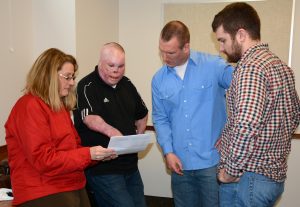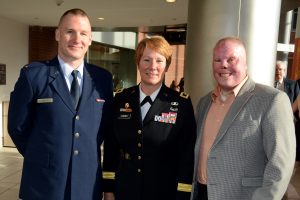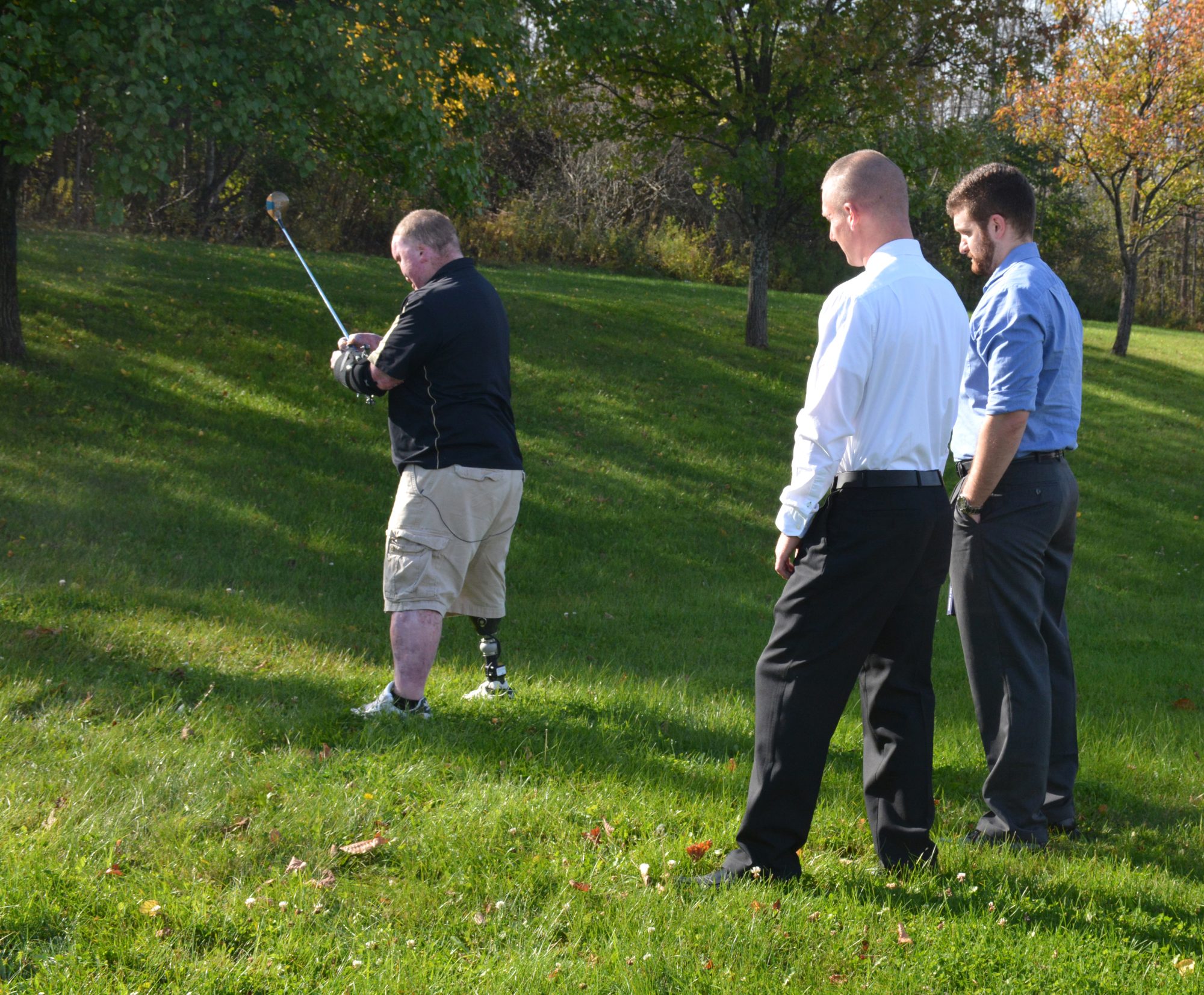More than anything else, he’d like to golf again.
Rick Yarosh of Windsor, N.Y., was deployed to Iraq in 2005. He served nine months until one day, in September 2006, his tank was hit by a makeshift bomb. The attack left him with terrible injuries. More than 60% of his body was badly burned, and his right leg had to be amputated below the knee. After a prolonged and remarkable recovery, he has taken on the role of motivational speaker, talking to military, non-profit, school, church, and other groups, showing by example how one can overcome adversity.
Yarosh says the support and expertise of staff at the Sitrin Health Care Center’s military rehabilitation program have been invaluable. And he has the help of Amos, his service dog. But it’s two college students who are helping him to accomplish something he’s longed for ever since his return home: to play golf.
 When Daniel Jones, chair of the engineering technology department, presented Yarosh’s wish to his engineering students as a possible project to tackle, two of those students—Adam Peters of New Hartford and Nicholas Arbour of Herkimer, both majoring in mechanical engineering technology—jumped at the chance.
When Daniel Jones, chair of the engineering technology department, presented Yarosh’s wish to his engineering students as a possible project to tackle, two of those students—Adam Peters of New Hartford and Nicholas Arbour of Herkimer, both majoring in mechanical engineering technology—jumped at the chance.
“Nicholas and I both realized when Dr. Jones introduced the problem to the class as a project possibility that this had real-world application,” Peters said. “And that is so much more rewarding when accomplished.”
Recently, the two met Yarosh for the first time. In a room in the Cayan Library, they gave him the opportunity to try out their current prototype, and get feedback on how it felt as well as how it could be made better for his specific use. The two worked on their prototype for about 12 weeks in class, and outside of class as well. Until the end-of-semester meeting, they had no specific information about him—which made the design problem even more challenging.
“Many of the challenges were all of the unknowns in terms of Rick’s mobilities and capabilities,” Peters said. “It has to be designed specifically for his anatomy. So, we’ll definitely have a better idea now that we’ve met him.”
“They’ve been doing this blind,” Yarosh said, “which makes it even more amazing, what they’ve been able to do without seeing me.”
Specific modifications were key to creating exactly what Yarosh needs. There is, he says, no “one size fits all” when it comes to equipment for injuries such as his.
“We had a list of questions that needed answering,” Arbour said. “While I was nervous before Rick first got here, I felt much more confident in our project and the prototype after meeting with him.”
For the students, meeting Yarosh in person helped them fine-tune and improve their creation so that he can once again return to the links. And Yarosh, impressed with how well the prototype worked for him, says this feels like it could finally be the success story he’s been looking for.
After continuing to make modifications to their prototype, Arbour and Peters presented Sgt. Yarosh with the adaptive golf club on October 28 at during a special event at the Sitrin Medical Rehabilitation Center in New Hartford.
“I’ve had about seven different prosthetic legs,” Yarosh said. “The reason is because they’re never perfect. So, I never get my hopes up too high. It’s trial and error. But seeing how far along these guys are is awesome. It felt like an extension of my arm.”
 Update: Nicholas Arbour was commissioned into the Air Force in May 2015 during a ceremony at Syracuse University. He asked his friend Rick Yarosh to attend.
Update: Nicholas Arbour was commissioned into the Air Force in May 2015 during a ceremony at Syracuse University. He asked his friend Rick Yarosh to attend.
Photo left to right: Nicholas Arbour, Maj. General Peggy Combs, and veteran Rick Yarosh.
